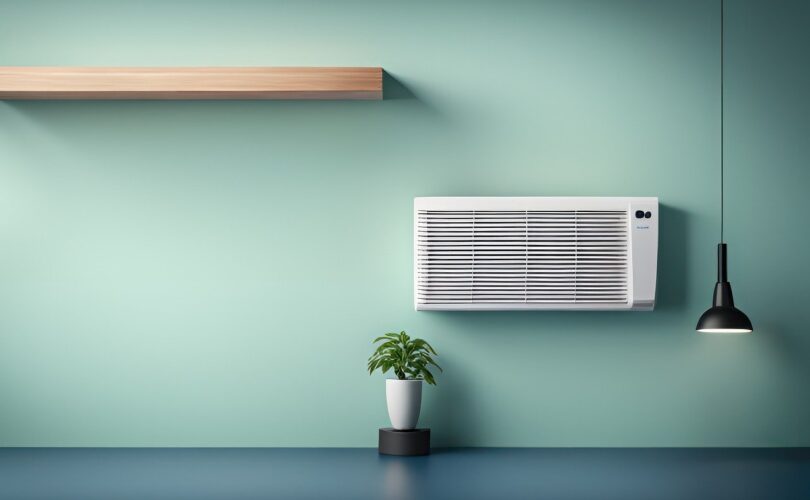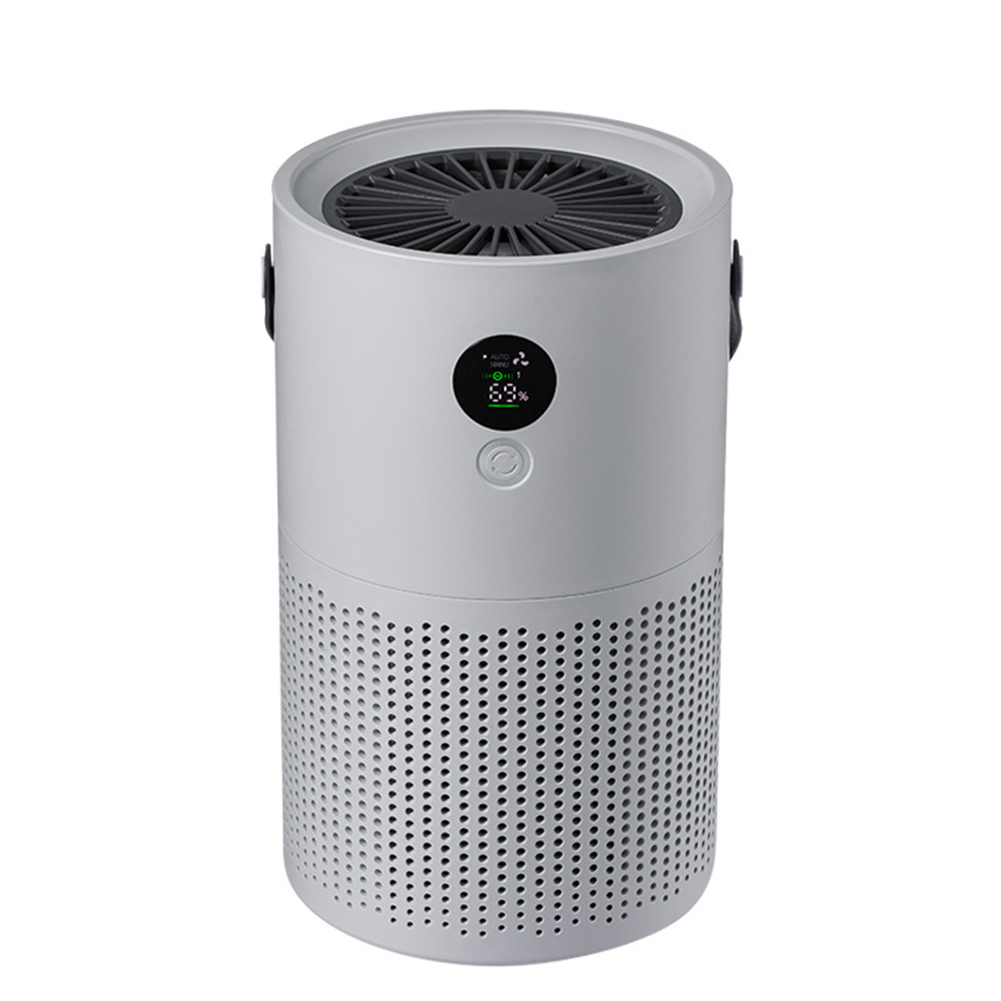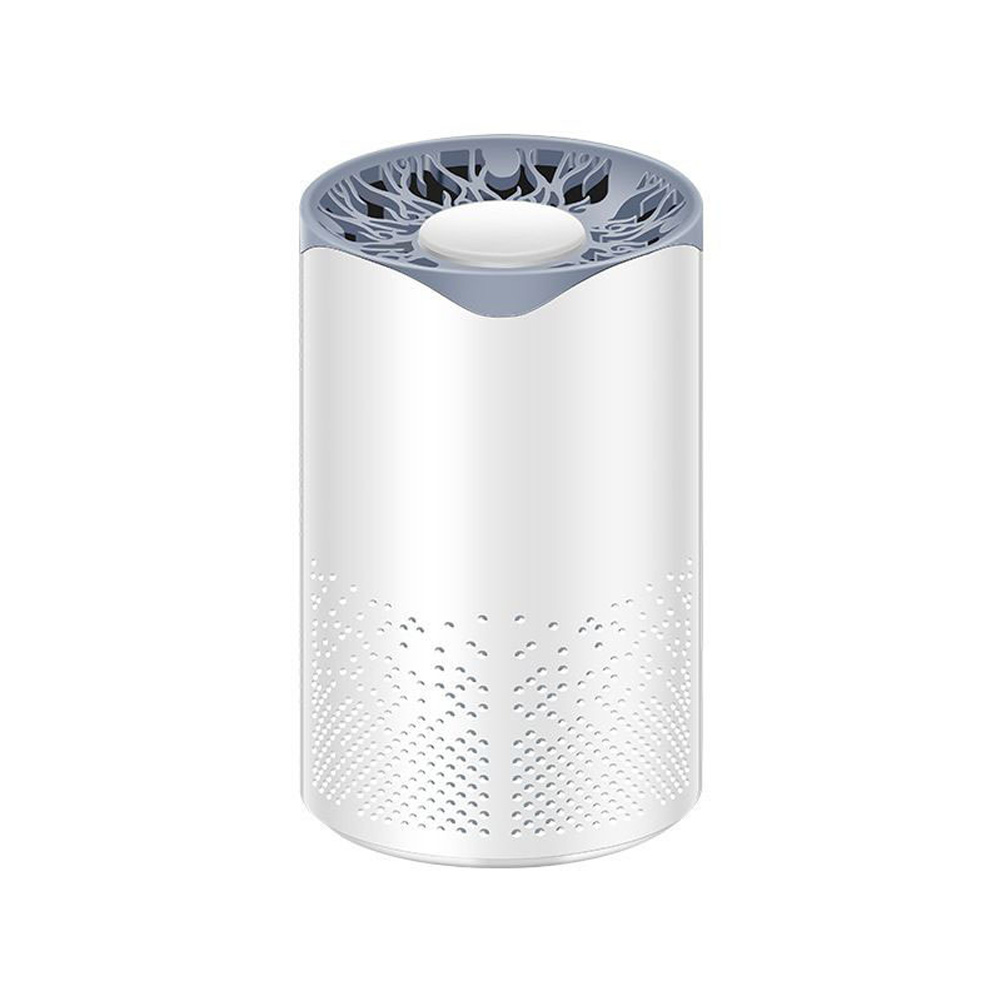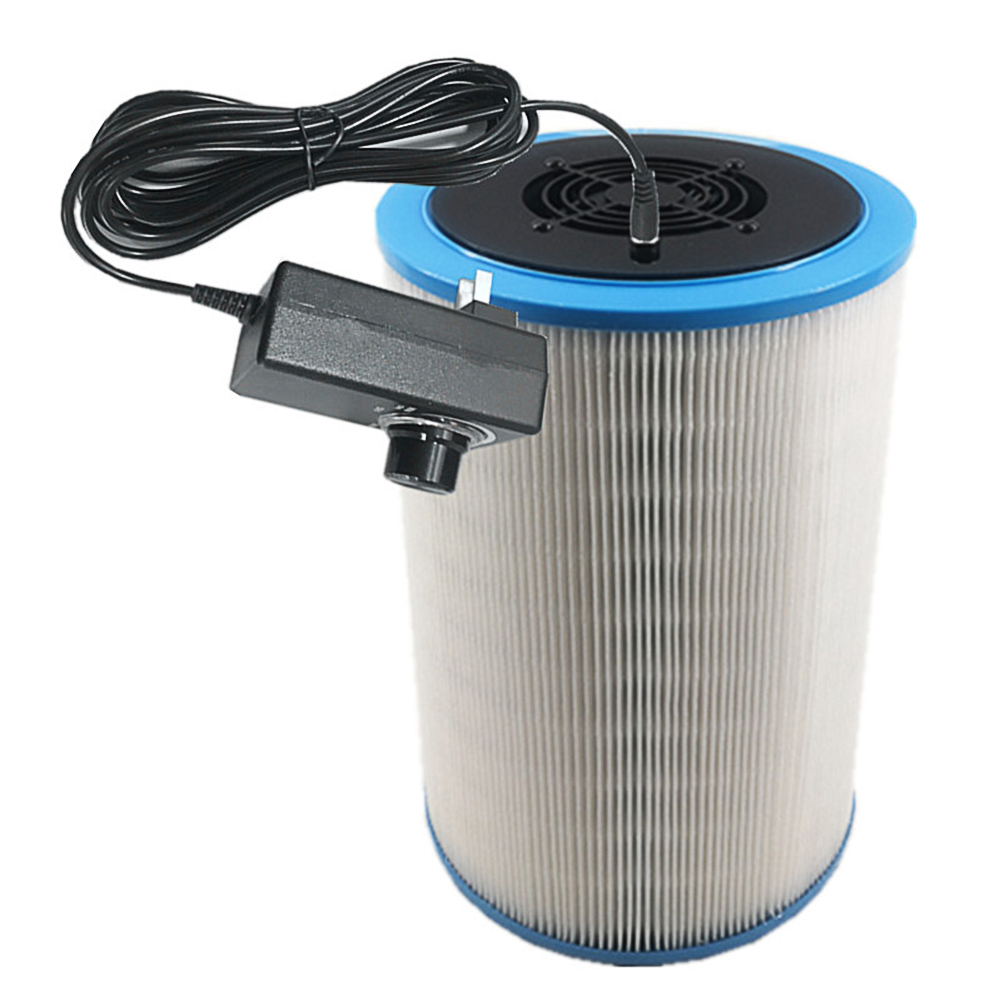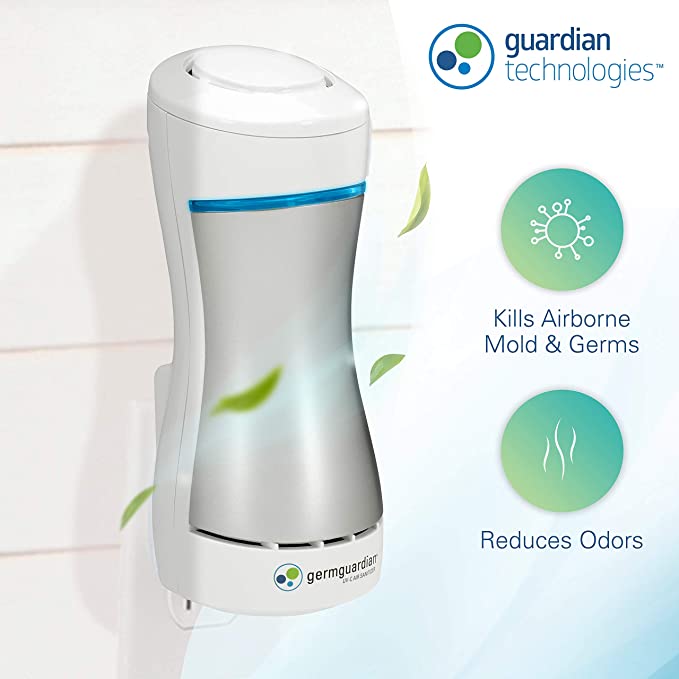The air we breathe inside our homes can significantly affect our health and well-being. Indoor air quality has become a growing concern as people spend more time indoors, with potential pollutants lurking in every corner. From dust and pet dander to volatile organic compounds and mold spores, the list of indoor air contaminants is extensive and can lead to various health issues if left unchecked.
This guide aims to shed light on the importance of maintaining clean air at home and offers practical solutions to improve indoor air quality. It will explore common indoor air pollutants, their health impacts, and effective strategies to purify the air we breathe. By understanding the factors that influence indoor air quality and implementing the right measures, readers can create a healthier living environment for themselves and their families.
Common Indoor Air Pollutants
Indoor air quality has a significant impact on our health and well-being. Understanding the common indoor air pollutants is crucial to maintaining a healthy living environment. Let's explore some of the most prevalent contaminants found in our homes.
Particulate Matter
Particulate matter (PM) consists of tiny pieces of dust, dirt, soot, smoke, and liquid droplets suspended in the air. These particles vary in size, with PM10 (diameter <10 µm) and PM2.5 (diameter <2.5 µm) being the most common classifications. PM2.5 poses a greater health risk due to its ability to penetrate deep into the lungs.
Sources of indoor particulate matter include:
- Cooking activities (broiling, frying, grilling)
- Combustion activities (smoking, burning candles, using fireplaces)
- Household products (cleaning products, air fresheners)
- Hobbies (woodworking, 3D printing)
- Biological sources (mold spores, dust mites)
- Outdoor air infiltration
Exposure to particulate matter can lead to various health issues, such as:
- Irritation of the eyes, nose, and throat
- Coughing and wheezing
- Aggravation of asthma and other respiratory conditions
- Increased risk of heart disease and stroke
To reduce particulate matter in your home, consider using exhaust fans when cooking, avoiding smoking indoors, and regularly changing air filters.
Volatile Organic Compounds (VOCs)
Volatile Organic Compounds are gasses emitted from certain solids or liquids. These chemicals are found in numerous household products and building materials. Common VOCs include benzene, formaldehyde, and toluene.
Sources of VOCs in indoor environments include:
- Paints and paint strippers
- Wood preservatives
- Aerosol sprays
- Cleansers and disinfectants
- Air fresheners
- Stored fuels and automotive products
- Dry-cleaned clothing
- Building materials and furnishings
Exposure to high levels of VOCs can cause:
- Eye, nose, and throat irritation
- Headaches and dizziness
- Nausea
- Damage to liver, kidney, and central nervous system
To minimize VOC exposure, increase ventilation when using products that emit these compounds, and choose low-VOC alternatives when available.
Biological Contaminants
Biological contaminants are pollutants of biological origin, including bacteria, viruses, mold, pollen, and animal dander. These contaminants thrive in environments with high humidity and inadequate ventilation.
Common sources of biological contaminants include:
- Damp or wet areas
- Air conditioning systems and humidifiers
- Carpets and upholstered furniture
- Household pets
Exposure to biological contaminants can trigger allergic reactions and respiratory issues, particularly in individuals with pre-existing conditions like asthma.
To control biological contaminants, maintain indoor humidity levels between 30-50% and ensure proper ventilation throughout your home.
Carbon Monoxide
Carbon monoxide (CO) is an odorless, colorless gas produced by the incomplete combustion of carbon-containing fuels. It's particularly dangerous due to its ability to interfere with oxygen delivery in the body.
Sources of indoor carbon monoxide include:
- Malfunctioning gas appliances
- Improperly vented furnaces and water heaters
- Wood-burning stoves and fireplaces
- Automobile exhaust in attached garages
Exposure to high levels of CO can cause:
- Fatigue and headaches
- Dizziness and confusion
- Chest pain
- In severe cases, loss of consciousness and death
To protect against CO poisoning, install carbon monoxide detectors in your home and ensure proper ventilation of fuel-burning appliances.
Radon
Radon is a naturally occurring, radioactive gas that forms when uranium in soil and rock breaks down. It can enter homes through cracks in foundations and become trapped indoors.
Radon exposure is the second leading cause of lung cancer in the United States, after smoking. The risk increases for smokers exposed to elevated radon levels.
To determine if your home has high radon levels, conduct a radon test. If levels are elevated, consider radon mitigation techniques such as soil suction or improved ventilation.
By understanding these common indoor air pollutants and taking steps to minimize their presence, you can create a healthier living environment for you and your family.
Health Impacts of Poor Indoor Air Quality
Poor indoor air quality has a significant impact on human health, leading to a range of serious health issues. The World Health Organization attributes over four million deaths annually to indoor air pollution, making it a critical public health concern. This largely preventable exposure represents a key target for reducing morbidity and mortality worldwide.
Respiratory Issues
Indoor air pollution has a profound effect on respiratory health across all age groups. From the early stages of life, exposure to poor indoor air quality can result in preterm birth and low birth weight, which can attenuate lung function development. During childhood, it increases the risk of respiratory infections, with studies showing that exposure to household air pollution from solid fuel use raises the risk of acute lower respiratory infections by 78%.
As individuals grow older, prolonged exposure to indoor air pollutants can lead to accelerated lung function decline and the development of chronic obstructive pulmonary disease (COPD). A meta-analysis found that exposure to biomass smoke increased the odds of COPD by 2.80 times and chronic bronchitis by 2.32 times. These respiratory issues can significantly impact quality of life and increase the risk of premature mortality.
Cardiovascular Problems
The impact of indoor air pollution extends beyond the respiratory system, affecting cardiovascular health as well. Exposure to fine particulate matter (PM2.5) and other pollutants can trigger cardiovascular events and contribute to the development of cardiovascular diseases. Short-term exposure to elevated levels of PM2.5 can increase the risk of heart attacks and cardiovascular-related deaths.
Pollutants such as carbon monoxide, nitrogen dioxide, and fine particulate matter can cross the airway epithelium, reaching the bloodstream and inducing the production of proinflammatory cytokines and reactive oxygen species. This can lead to hypertensive responses and changes in autonomic cardiac control. Studies have shown associations between decreased heart rate variability, elevated blood pressure, and exposure to fine particulates.
Cognitive Effects
Recent research has shed light on the cognitive effects of indoor air pollution. The Global CogFx study, conducted among office workers in six countries, found significant acute effects of PM2.5 and poor ventilation on cognitive test performance. For every 10 μg/m³ increase in PM2.5, researchers observed 0.8-0.9% slower response times and 0.8-1.7% lower throughput (correct responses per minute).
Additionally, carbon dioxide levels, often used as a proxy for ventilation, were found to impact cognitive function. For every 500 ppm increase in CO2, response times were 1.4-1.8% slower, with 2.1-2.4% lower throughput. These findings suggest that the cognitive effects of indoor air pollution are not limited to children or older populations but also affect young adults.
Cancer Risks
Long-term exposure to indoor air pollutants has been linked to an increased risk of lung cancer, particularly among non-smoking populations. In Taiwan, where the prevalence of smoking among women is low, indoor air pollution is considered an important environmental risk factor for lung adenocarcinoma in non-smoking women.
Habitual cooking practices and indoor incense burning have been identified as significant contributors to this risk. Chinese cooking methods, which involve high-temperature stir-frying and other techniques, produce oil fumes containing polycyclic aromatic hydrocarbons (PAHs), heterocyclic aromatic amines, benzene, and formaldehyde. Similarly, incense burning, a common practice in Chinese culture, releases particulate matter and various organic compounds that may contribute to lung cancer risk.
Allergies and Asthma
Indoor air pollution plays a crucial role in exacerbating allergies and asthma symptoms. Common indoor allergens include dust mites, pet dander, cockroach allergens, and mold spores. These allergens can accumulate on surfaces throughout the home, including furniture, carpets, bedding, and even walls.
Exposure to these allergens can trigger asthma attacks and allergic reactions year-round. Studies have shown that modifying the indoor environment to reduce particulate matter, nitrogen dioxide, and allergen exposure may be an important asthma management strategy. This is particularly crucial in urban environments, where indoor air quality can significantly impact asthma morbidity.
Improving Indoor Air Quality
Enhancing indoor air quality is crucial for maintaining a healthy living environment. By implementing effective strategies, individuals can significantly reduce their exposure to harmful pollutants and create a safer, more comfortable home. This section explores various methods to improve indoor air quality, focusing on source control, ventilation techniques, air purification methods, regular cleaning and maintenance, and humidity control.
Source Control
The most effective approach to improving indoor air quality is source control. This method involves eliminating or reducing the sources of pollution within the home. By addressing the root cause of air quality issues, individuals can create a healthier living space without relying solely on other mitigation techniques.
To implement source control:
- Avoid burning indoors, including candles and incense, as they release pollutants into the air.
- Refrain from using kerosene heaters, camp stoves, or other unvented fuel-burning appliances indoors, as they emit toxic gasses.
- Opt for fragrance-free products, as air fresheners and strongly scented items can contain volatile organic compounds (VOCs) and other harmful chemicals.
- Prohibit smoking or vaping indoors to prevent the release of numerous harmful pollutants.
- Choose building materials and furnishings that do not contain formaldehyde.
- Keep pets off furniture and beds, especially for individuals with allergies.
- Use dust mite mattress and pillow encasements for those allergic to dust mites.
Ventilation Techniques
After source control, ventilation with clean outdoor air is the next crucial step in improving indoor air quality. Proper ventilation helps dilute indoor pollutants, reduce humidity, and maintain a healthy living environment.
To enhance ventilation:
- Open windows and doors for at least 15 minutes daily to allow fresh air to circulate.
- Use exhaust fans in bathrooms and kitchens to remove moisture and gasses. Run fans while bathing and for 30-45 minutes afterward.
- Install a kitchen exhaust fan that vents to the outside to remove cooking fumes, airborne particles, and moisture.
- Utilize ceiling fans to improve air flow, preferably with windows open.
- Provide extra ventilation when using paints, hobby supplies, or chemicals by opening windows and using portable window fans.
Air Purification Methods
Air purifiers can be effective tools for removing pollutants from indoor air. Different types of air purifiers target various contaminants, offering unique benefits and considerations.
- HEPA Purifiers: These devices use a fan to draw polluted air through a fiberglass filter, trapping airborne particles. HEPA purifiers are highly effective against particle pollution and do not produce harmful byproducts.
- Adsorbent Purifiers: These purifiers use materials that attract substances to their surface through physical or chemical processes. They are effective at removing odors and VOCs, which HEPA purifiers cannot tackle.
- UV Purifiers: These devices expose air to UV-C light, breaking down the chemical bonds in microorganisms' DNA. UV purifiers are particularly useful for targeting airborne bacteria, viruses, and fungi.
- Ionic Purifiers: While these purifiers can be effective, they may produce ozone as a byproduct, which can be harmful to health. Due to potential risks, ionic purifiers are not recommended for home use.
Regular Cleaning and Maintenance
Maintaining a clean home plays a vital role in improving indoor air quality. Regular cleaning helps remove allergens, pollutants, and contaminants that accumulate over time.
To maintain a clean home:
- Dust and vacuum frequently, using a HEPA vacuum at least weekly to reduce pollutants from carpets and rugs.
- Mop floors and clean surfaces regularly to remove accumulated dust and allergens.
- Clean HVAC vents to prevent the spread of contaminants through the system.
- Address mold and mildew issues promptly to prevent spore release.
- Minimize clutter, as it can trap dust and impede cleaning efforts.
- Regularly replace HVAC filters to prevent the recirculation of pollutants.
Humidity Control
Maintaining proper humidity levels is essential for indoor air quality. High humidity can lead to mold growth, while low humidity can cause respiratory irritation.
To control humidity:
- Use dehumidifiers in damp areas to reduce moisture levels.
- Employ humidifiers in dry environments to increase moisture content.
- Aim to keep indoor humidity between 30% and 50%.
- Use a moisture or humidity gage to monitor levels accurately.
- Ensure proper ventilation in bathrooms and kitchens to remove excess moisture.
By implementing these strategies, individuals can significantly improve their indoor air quality, creating a healthier and more comfortable living environment.
Conclusion
Maintaining good indoor air quality has a significant impact on our health and well-being. This guide has explored the common pollutants lurking in our homes, their health effects, and practical ways to improve the air we breathe. By understanding these factors and taking steps to address them, we can create a healthier living environment for ourselves and our families.
To wrap up, improving indoor air quality is an ongoing process that requires attention and effort. By implementing strategies like source control, proper ventilation, and regular cleaning, we can significantly reduce our exposure to harmful pollutants. Remember, small changes can make a big difference in creating a safer, more comfortable home environment. So, let's take action to breathe easier and live healthier lives indoors.

FAQs
Q: What steps can be taken to enhance the quality of indoor air at home?
A: To enhance indoor air quality, consider three primary strategies: controlling the source of pollutants, improving ventilation, and utilizing air cleaners or filtration systems.
Q: What are effective methods to cleanse the air inside a house?
A: One effective method to purify indoor air is to open windows for about five minutes daily, which helps reduce the buildup of harmful pollutants. Additionally, keeping a window slightly open during the night can maintain a fresh air supply, though extra blankets might be needed in colder weather.
Q: What signs indicate poor air quality within a home?
A: Symptoms of poor indoor air quality may include headaches, eye irritation, fatigue, dry throat, sinus congestion, dizziness, and nausea. These symptoms can be similar to those of various illnesses, making it challenging to diagnose conditions related to poor air quality.
Q: How can indoor air quality be purified?
A: Improving indoor air quality can be achieved by regularly vacuuming to reduce dust, using microfiber or damp cloths for dusting, controlling humidity to prevent mold and mildew, changing appliance filters frequently, and testing for harmful gasses like radon.
